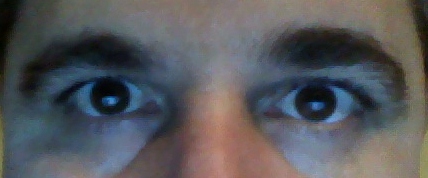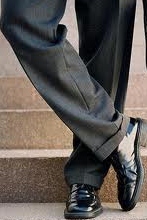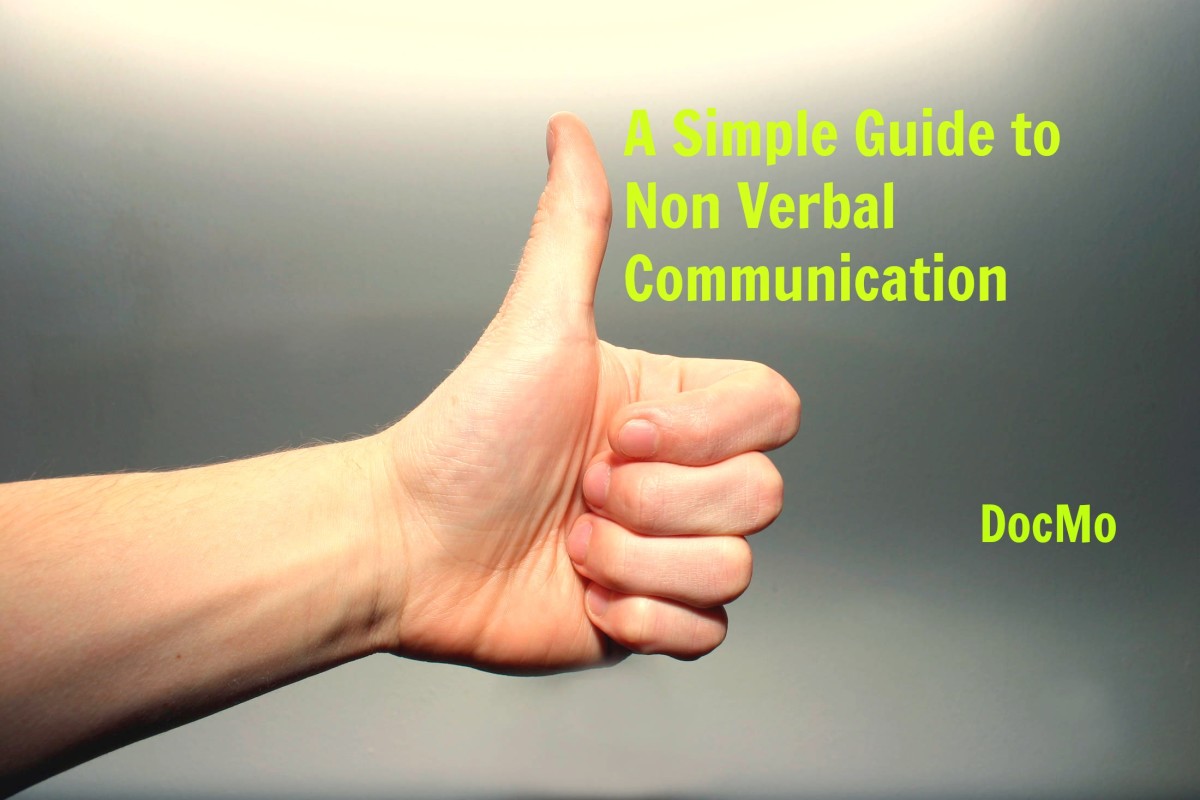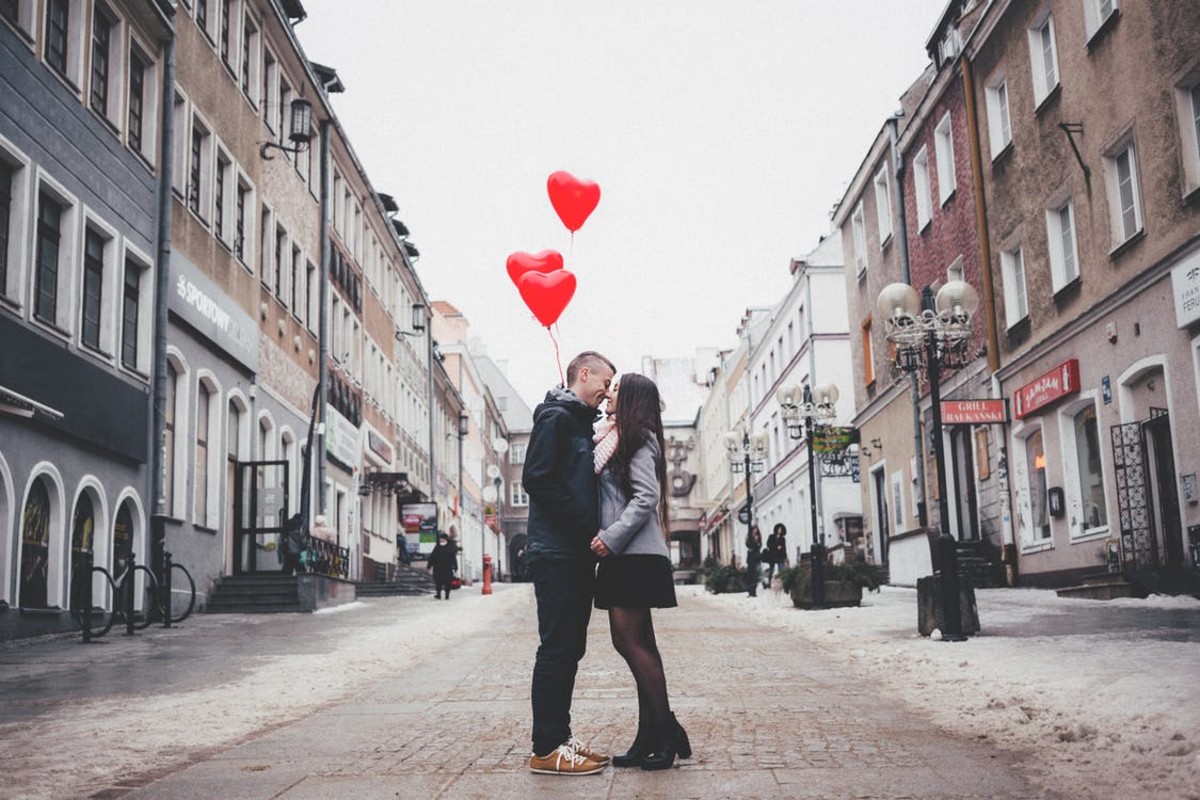Interpreting Body Language

When I started to research the topic of body language, the first thing I came to realize was that it is definitely not an exact science. There are many opinions on how to read body language and in some cases, the opinions do not just vary – they contradict. How much communication is verbal versus non verbal? Some psychologists say human communication is 20% verbal and 80% non-verbal however depending on the source, non-verbal communication ranges between 60 to 90 percent. All sources seem to indicate that non-verbal communication makes up over 50% of the way we communicate. The interpretations of body language are many. Determined to make some sense of it all, I pushed on and began to see commonalities.
The interpretation of body language needs to be cautioned; we have to remember to read it in context. As an example, one of the most known signs of body language is the crossing of the arms. Several sources call it a “barrier” or a sign of not being open to the conversation. Crossed arms could simply mean “I’m cold” or “I have a stain on my tie”. If you remember that body language only makes up a portion of the communication experience and take all things into account such as tone of voice and what is happening in the surroundings at the time, then you will likely find that you can read people much better on the whole. With that in mind, let’s take a look at some of what I found to be the most interesting and useful tips to reading body language.

THE EYES ARE THE WINDOW TO THE SOUL
I am often captivated by peoples’ eyes as we can read so much into a person this way. We have no control over our pupils which makes this one of the most honest signs of body language. Pupils are said to dilate when we are interested in the person we are talking to or what we are looking at. We often demonstrate that we are interested in what someone is saying (or the someone) by maintaining regular intervals of eye contact. Although eye contact is essential, overly persistent eye contact or staring can be intimidating. The New Zealand Medical Journal reported that one reason so many young children are attacked by pet dogs is because of their over-powering regular eye contact which causes the animal to feel threatened and defensive. Overly persistent eye contact can also be a sign of unusual effort and awareness of what the person is saying; in the case of a person who is trying to deceive someone, they may distort their eye contact so that they're not avoiding it - a widely recognised indicator of lying.
Did you know we blink an average of 6 to 10 times per minute? Did you know that blinking more than that can be an indication that the person is attracted to the person they are talking to? Blink rate can also increase when someone is nervous or assessing something. Eye direction can be very insightful as well. Lowering eyes is sign of submission, fear or guilt. Looking to the left signifies recollection from memory whereas looking to the right indicates creation. If someone is looking to the right while they are telling a story, it could be an indication of deceit! Be careful though – the directions are said to be reversed in left handed people. If in doubt, you can test the person by asking them to recall known facts or imagine something. Boredom can often be identified when someone is consistently looks around themselves. Other experts say that looking up and to the right is a universal symbol of boredom. People tend to look directly upwards as they are thinking while continual glancing at something or someone may suggest a desire for that person. One sign I have seen, tried and tested is that staring at someone’s lips indicates a desire to kiss that person. Sizing up a person by looking at them from head to toe is associated with assessing them as either as a potential threat or as a sexual partner.

NOW THAT’S USING YOUR HEAD
When it comes to the head, motion or placement can signify different states of mind. Here are some common signs and interpretations:
· A tilted head symbolizes interest in someone or something ← we also see this in animals such as dogs, cats and birds
· The occasional nod from a listener to a speaker is an indication that they are listening and are interested however too much nodding implies that a listener has lost interest and is simply nodding to be polite
· Touching or tugging an ear indicates indecision; though it is also sometimes done when a person is being untruthful
· People often pinch the bridge of their nose and close their eyes when making a negative evaluation ← I think I remember seeing this one when I’ve asked my boss for a raise!
· A genuine smile engages the whole face (including the eyes); a false smile will often only engage the lips
· A person stroking their chin is evaluating or making a decision
What about running fingers through your hair? Opinions on this one vary a great deal. Some say it means that the person is frustrated; others say the person is preening themselves because they feel attractive. Playing with hair or patting down hair can be a sign of insecurity. Personally, my mother always said I started playing with my hair when I was tired. As I got older, I began to realize that this was true and still holds true today. I wonder how much of our body language is unique to the individual?
UPPER BODY
The chest, the arms and the fingers are more instruments of our expression:
· Pushing the chest forward draws attention to it; for women this is seen as a provocative romantic display whereas for men it’s a show of strength and power
· Open arms, particularly when combined with showing palms, mean that someone is approachable and willing to communicate with others
· Upward facing palms signify that a person’s defenses are down and that they’re speaking sincerely with an open heart
· Positioning hands behind the back shows that someone is relaxed and comfortable; though it can also be used on purpose to convey a message of power and confidence
· Finger pointing is interpreted as either a sign of assertiveness or a sign of aggression
· Tapping or drumming fingers communicates impatience or frustration
· Biting fingernails represents insecurity and nervousness
· Interlinked fingers, finger tips touching or index fingers pressed together, are positive gestures that show a person is thinking, evaluating or deciding
· Touching the front of the neck symbolises concern about what another person is saying

LOWER BODY
Last but not least, the legs and feet:
· A normal, relaxed standing pose is with the feet positioned at shoulder width; the wider a person’s feet are positioned from each other, the more dominant and powerful they feel
· Standing with hands on hips expresses either readiness or aggression
· Sitting with legs open / apart means that a person is comfortable and is feeling secure in their surroundings
· Sitting legs may point (with knees or feet) at the most interesting person in a room or in a person’s desired direction of travel (i.e. towards a door)
· Legs crossed towards someone suggest a greater level of interest in them than legs crossed away from them
· A slightly kicking / bouncing foot when sitting with crossed legs suggests boredom or impatience
· Crossing ankles is a sign of being fairly relaxed, especially when the legs are stretched forward and the person is leaning back
· The ‘figure-of-four cross’ occurs when one ankle is placed on top of the other legs' knee, with the top leg's knee pointing sideways; this signals confidence and power.
THE HANDSHAKE
"Ninety percent of what we think about a person is determined in the first ninety seconds we meet them." – Anonymous
One of the most common rituals involving body language is the handshake. Much has been written on this especially in a business setting as first impressions are so important when being interviewed a job or landing that major contract. Some say there is no correlation between a handshake and the character of the individual. They believe that it is a learned behaviour and many continue with it as it is believed to the “right” and only way to do it. No matter what you believe, people will most often form some sort opinion of you based on your handshake.
A handshake with the palms vertical to the ground and arms extended forward as if you were sawing wood sends a message of greetings and signifies equality. If you shake hands with your palm up, it can be interpreted as you are there to serve the person you are shaking hands with or it can also indicate submission. If your palm is down, it is considered to be authoritative and is going to take care of things or get the job done however it can also mean a controlling personality. If someone brings in their second hand to sandwich yours while shaking, it could be an effort to show empathy, concern or familiarity. I’ve seen politicians use this handshake and now wonder if it is a strategic choice of handshake on their part.
Here are a more samples of handshake types and their interpretations:
· The Lingering Hand Shake - A standard hand shake with an extra few shakes and holding on for just a few seconds. This often happens when old friends meet or with a goodbye to someone dear. Between business people, it gives a bit of a chance to communicate positive thoughts.
· The Push Off - At the end of the shake, your hand is pushed away. It is subtle but it could be read as a negative message.
· The Pull In - The handshake results in one pulling the other closer. It speaks of a controlling body language.
· The Superior -If offered first palm down, it indicates superiority. It is the body language of a controlling person.
· The Lesser - If offered first, palm up, it could indicate humility and being there to serve.
· The Finger Cruncher - Rather than grasping across the palm, the fingers are grasped and crushed. It can be painful. The person who does the finger cruncher will say they can’t judge their strength but if you watch, they will not shake a woman's hands the same way. It is almost as if it is sport to give pain.
· The Bone Cruncher - Much like the finger cruncher, the same vice like grip is around the hand.
· The Palm Pincher - This is usually from a woman, and only a few fingers and thumb grasp the palm for the shake.
· The Twister - This may start off as a normal shake but ends up with one twisting and putting the other on top. Sometimes it is incorporated with a pull in. It speaks of a controlling personality.
What are some dos and don’ts of a good handshake? One of the most important things is to maintain eye contact while shaking hands as it will convey self confidence, sincerity and camaraderie. In North America, a firm hand shake is appropriate. If you make it stronger or weaker than a basic firm grasp then you may leave a negative impression. Something to be conscious of is sweaty palms. As you won’t get a second chance to make that first impression, you don’t want to be remembered for your wet hands. It is good to carry a handkerchief and discretely dry your hands before shaking someone else’s if you are challenged with sweaty palms. If you are having a drink, remember to hold it in your “non shaking” hand and try to remember to wash your hands and dry well prior to meetings. Keeping your palms open and out of your pockets are also good preventative measures.
During a typical handshake, hands are engaged and eye contact made, smiles are exchanged and there are two to four shakes (about three or four seconds). What if your hands are full? Rather than risk dropping everything, giving a polite nod is considered acceptable. If the other person’s hands are full, be kind and don’t offer a hand shake (it will be noted and appreciated). If wearing gloves, remove them and remember to stand if you’re caught in an introduction while seated.

PUTTING IT ALL TOGETHER
Reading body language can be a great topic for conversation or a subject of in depth scientific study. Either way it is still amusing to put it all together and test out your abilities. Our bodies can be a very expressive instrument of expression. We should be mindful that others may be watching our body language so keep this in mind during interviews or social functions so remember – keep your posture upright, feet pointed to your subject, make frequent eye contact (but not too much), don’t cross your arms, tilt your head and nod once in a while, don’t look down or play with your hair, don’t point, don’t play drums with your fingers or bounce your foot while your legs are crossed and remember to stand up and give a firm dry handshake. Simple right?





